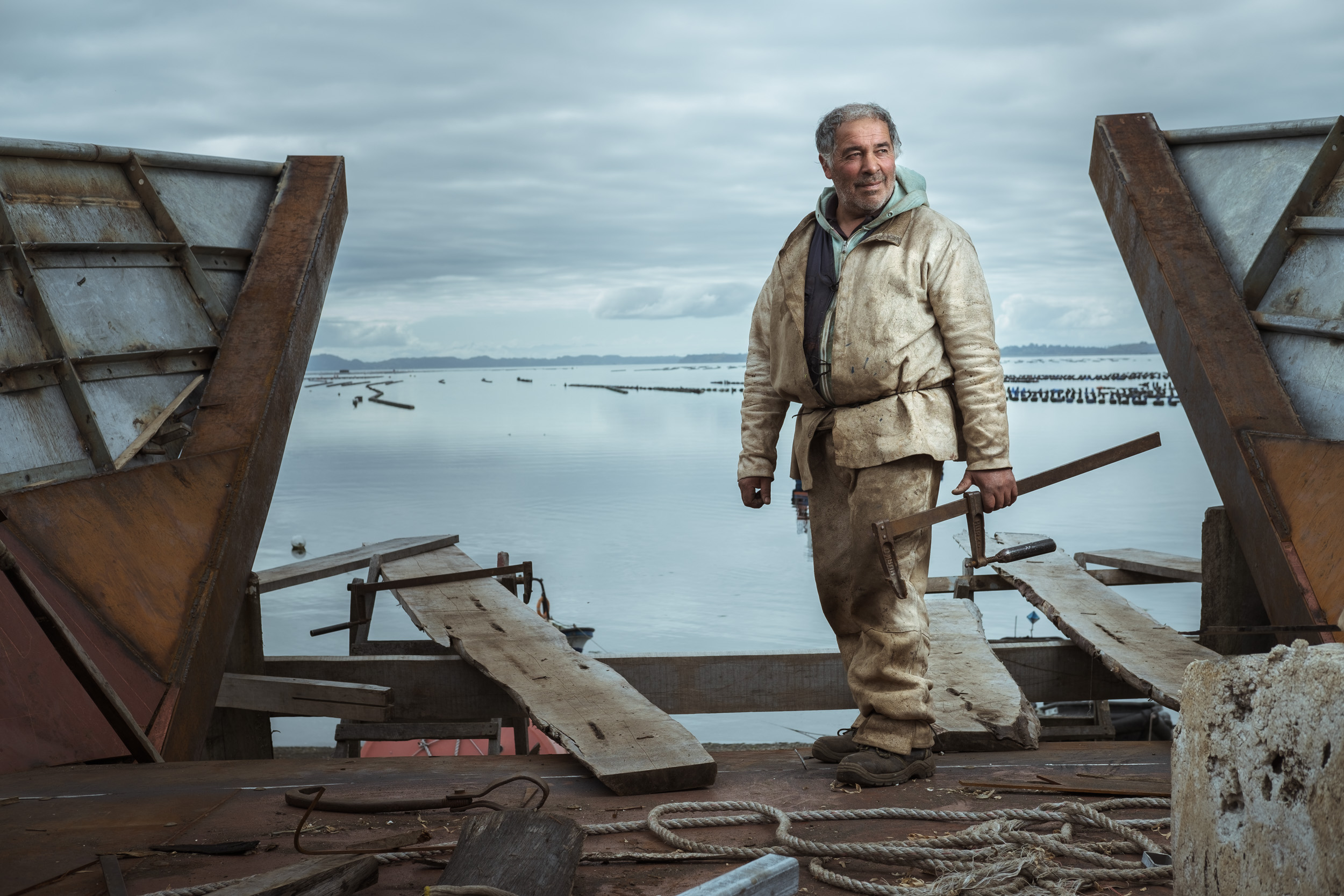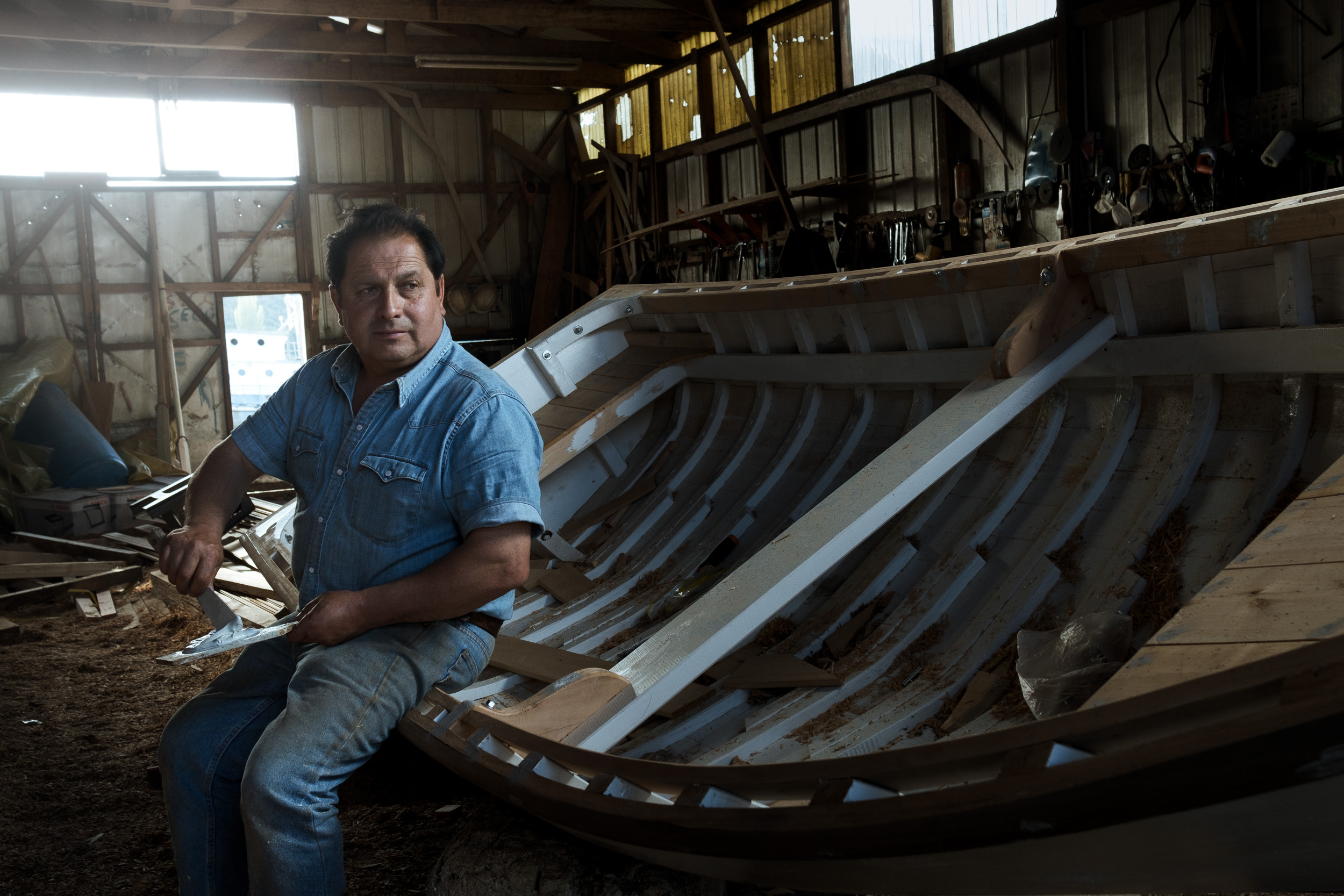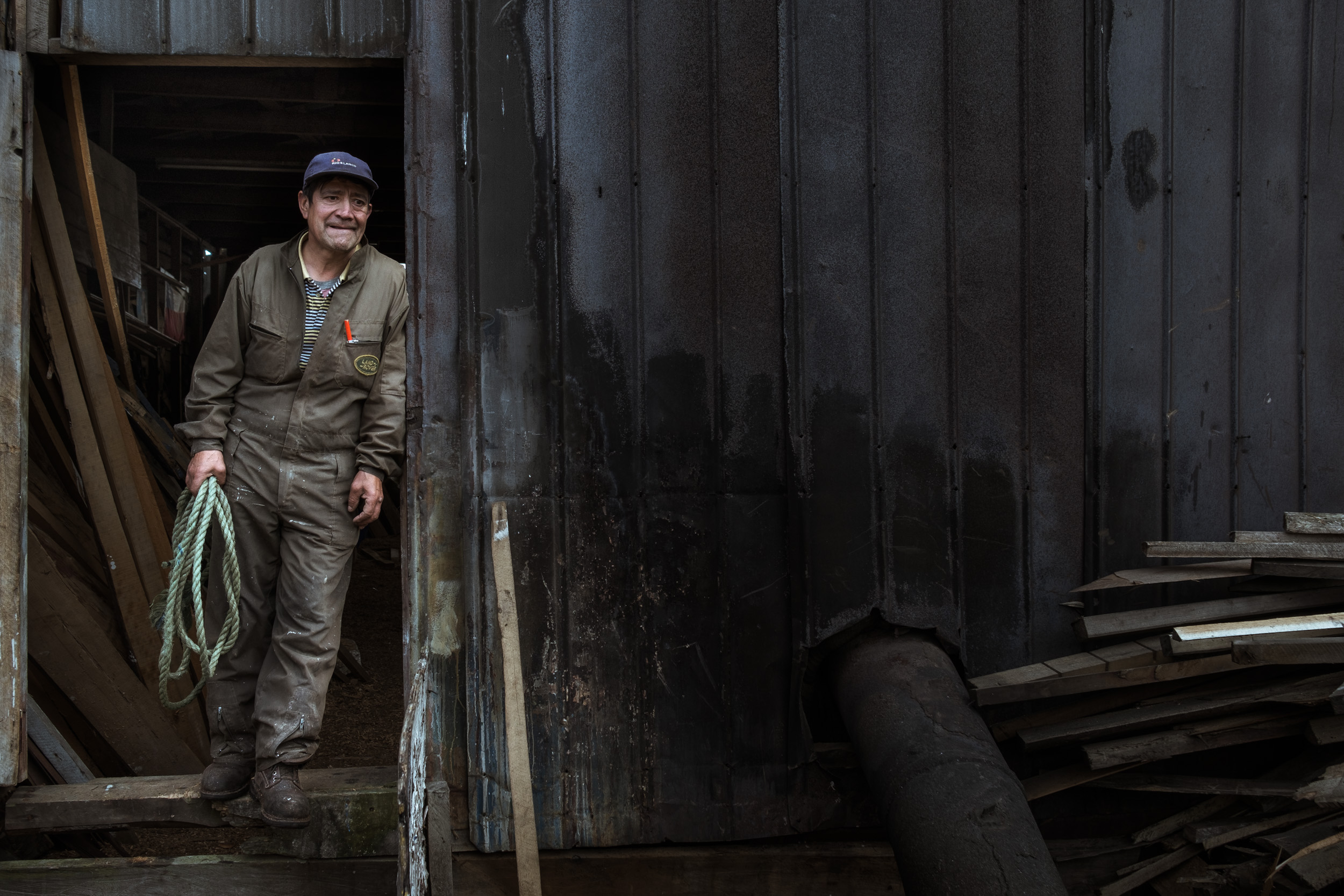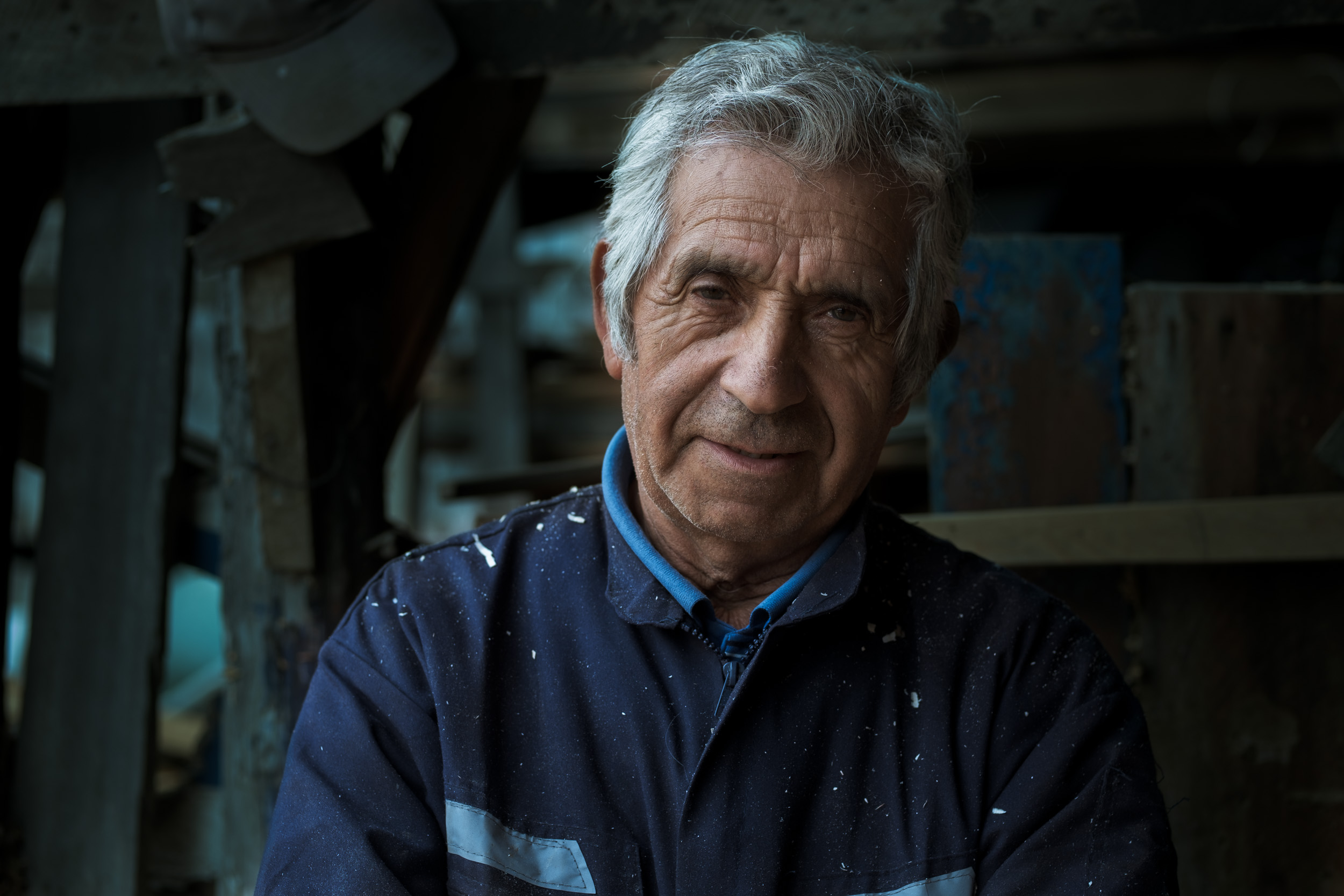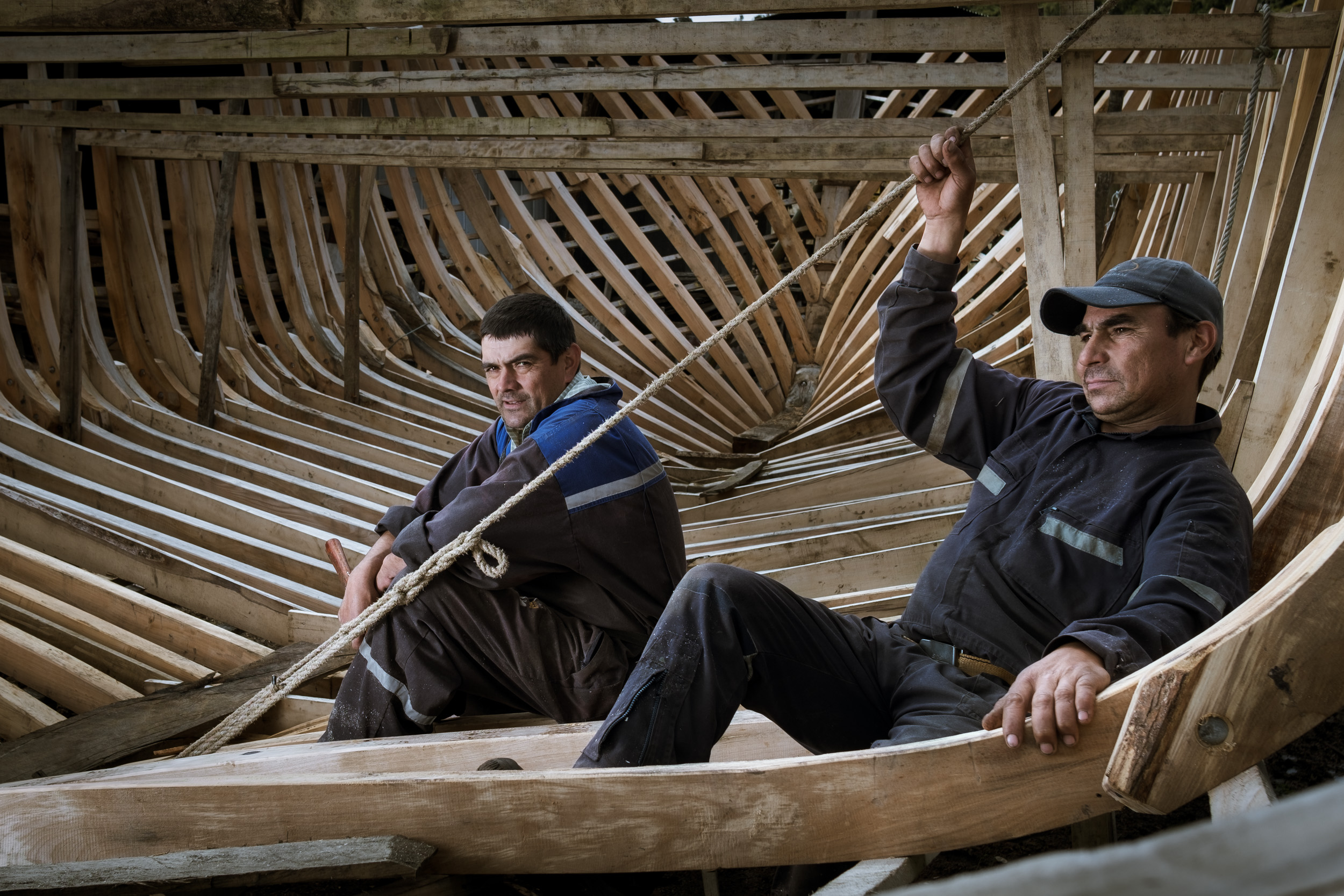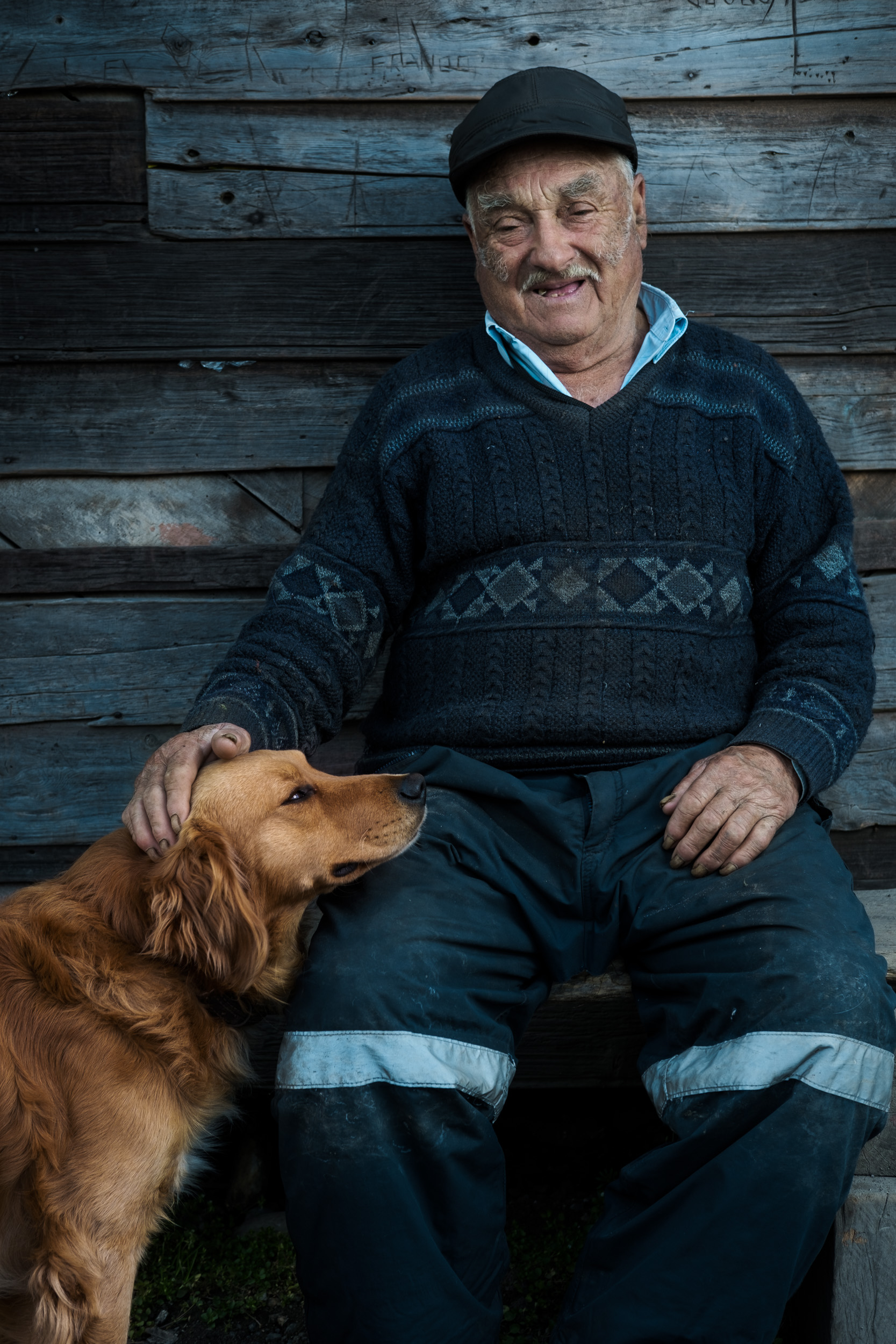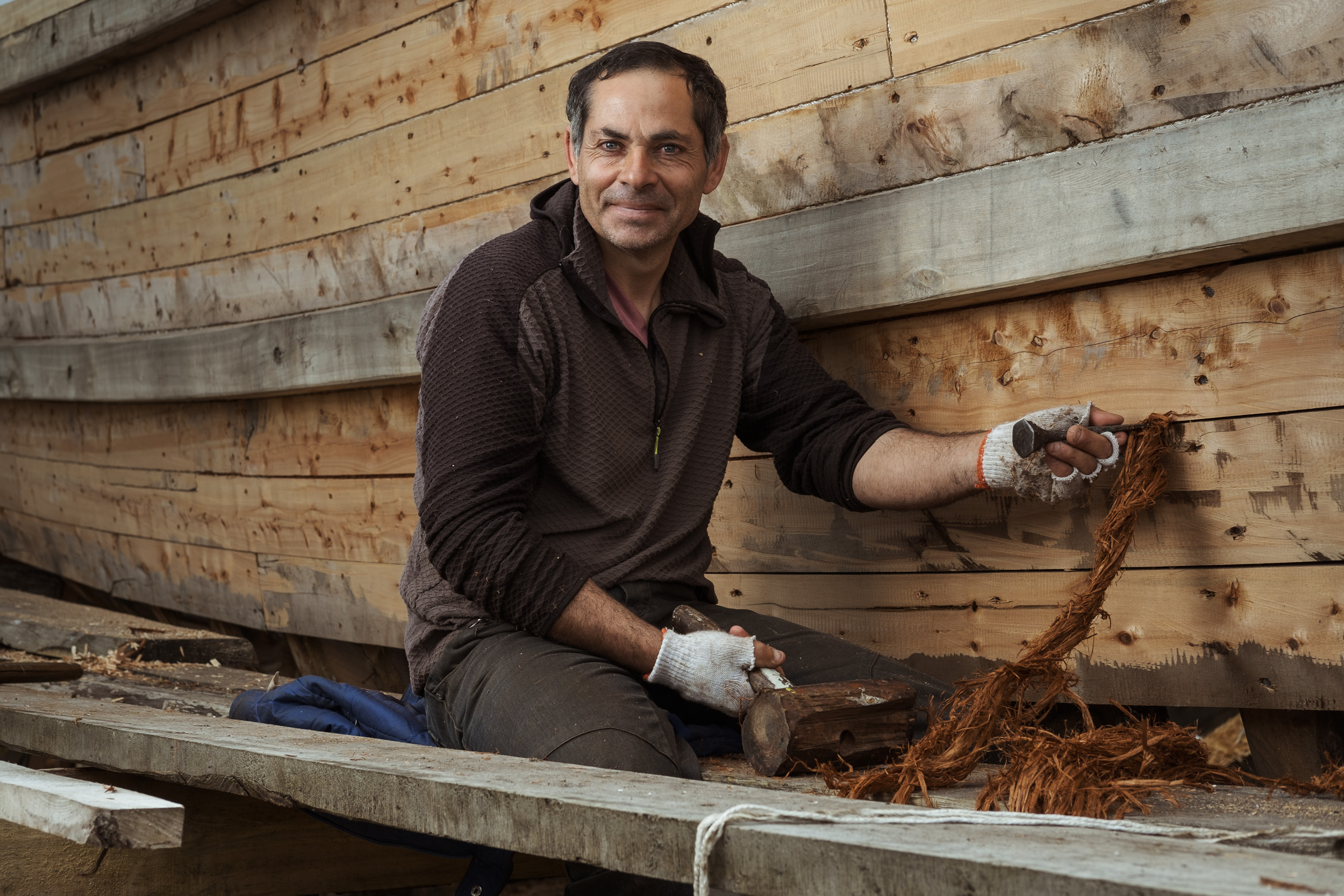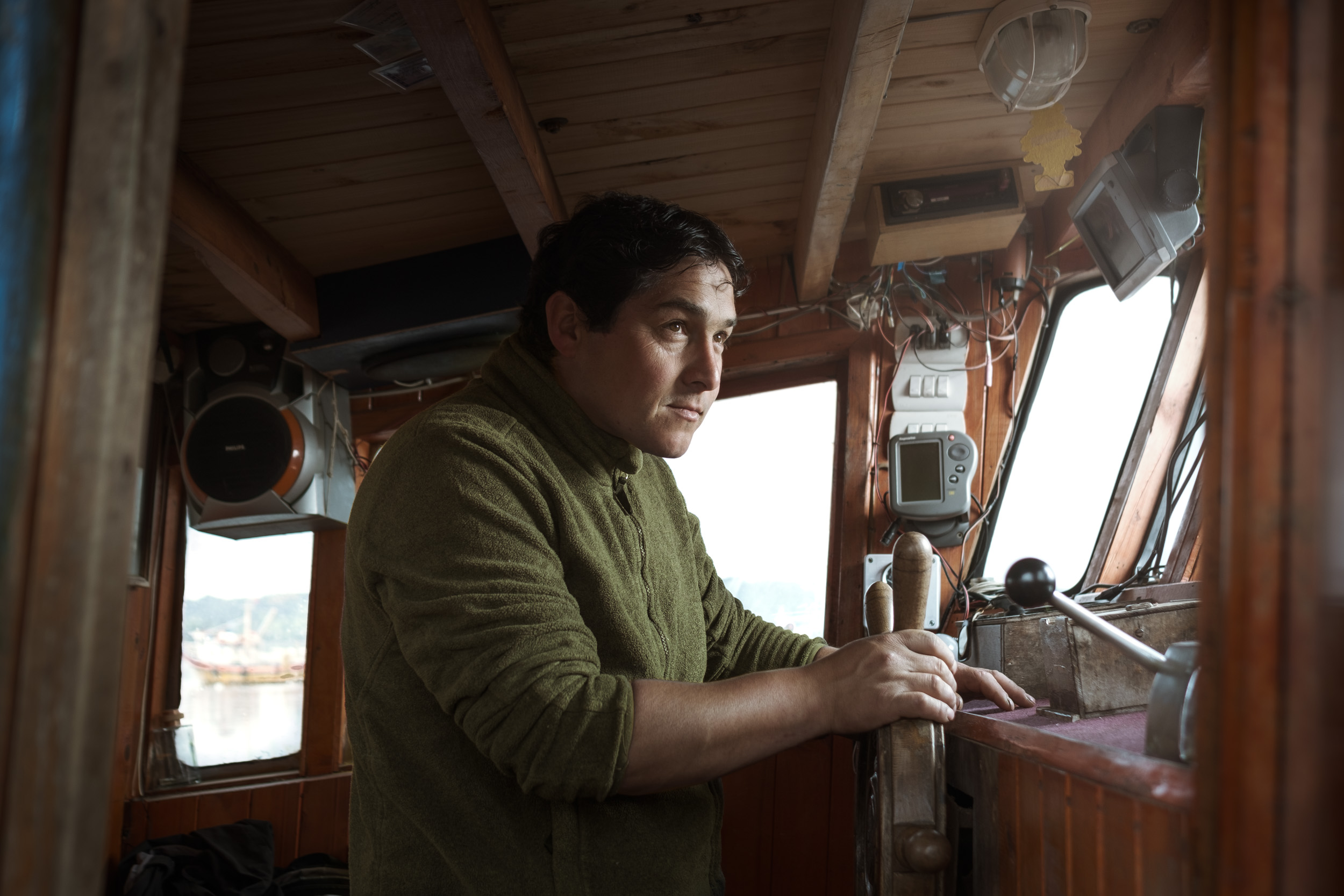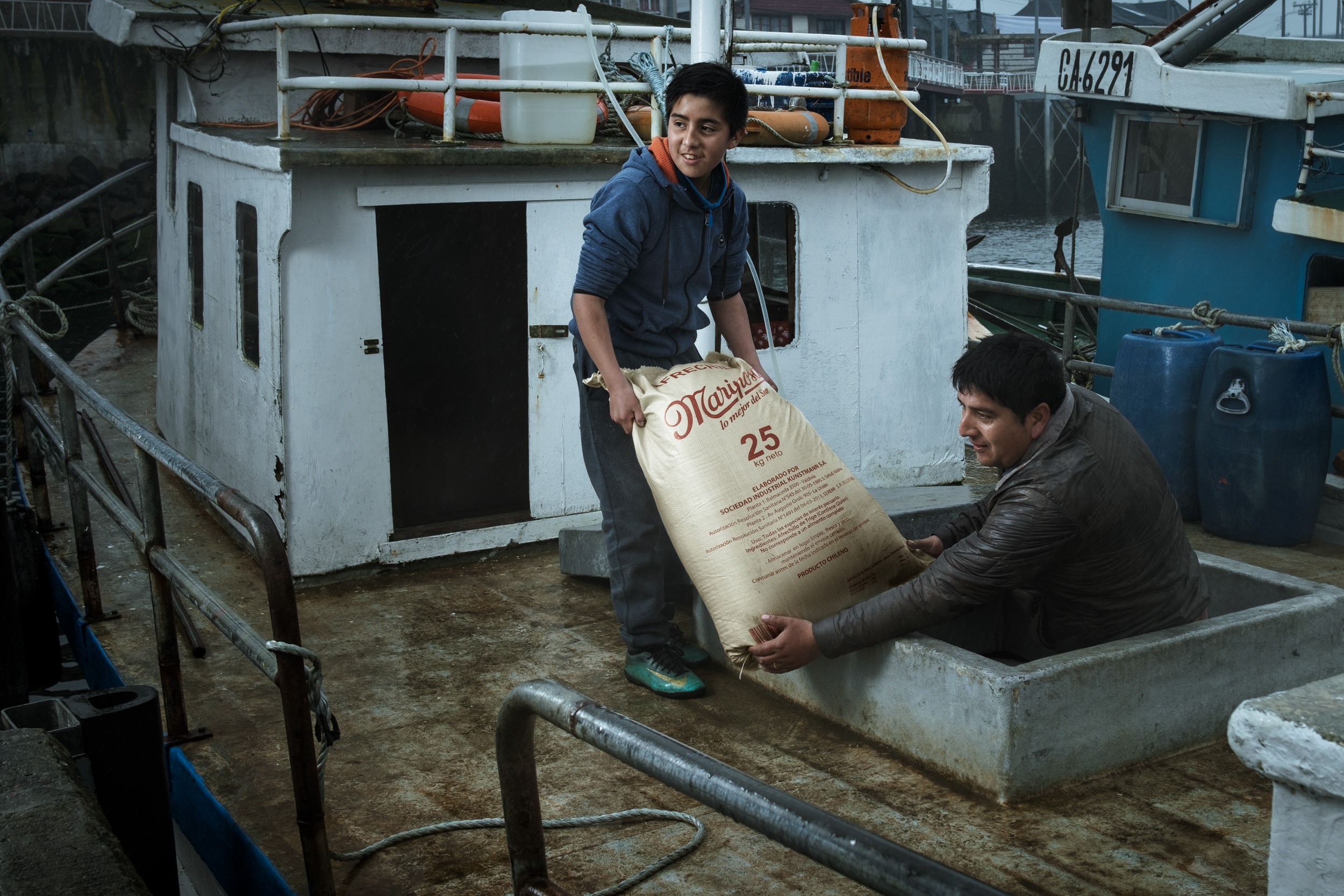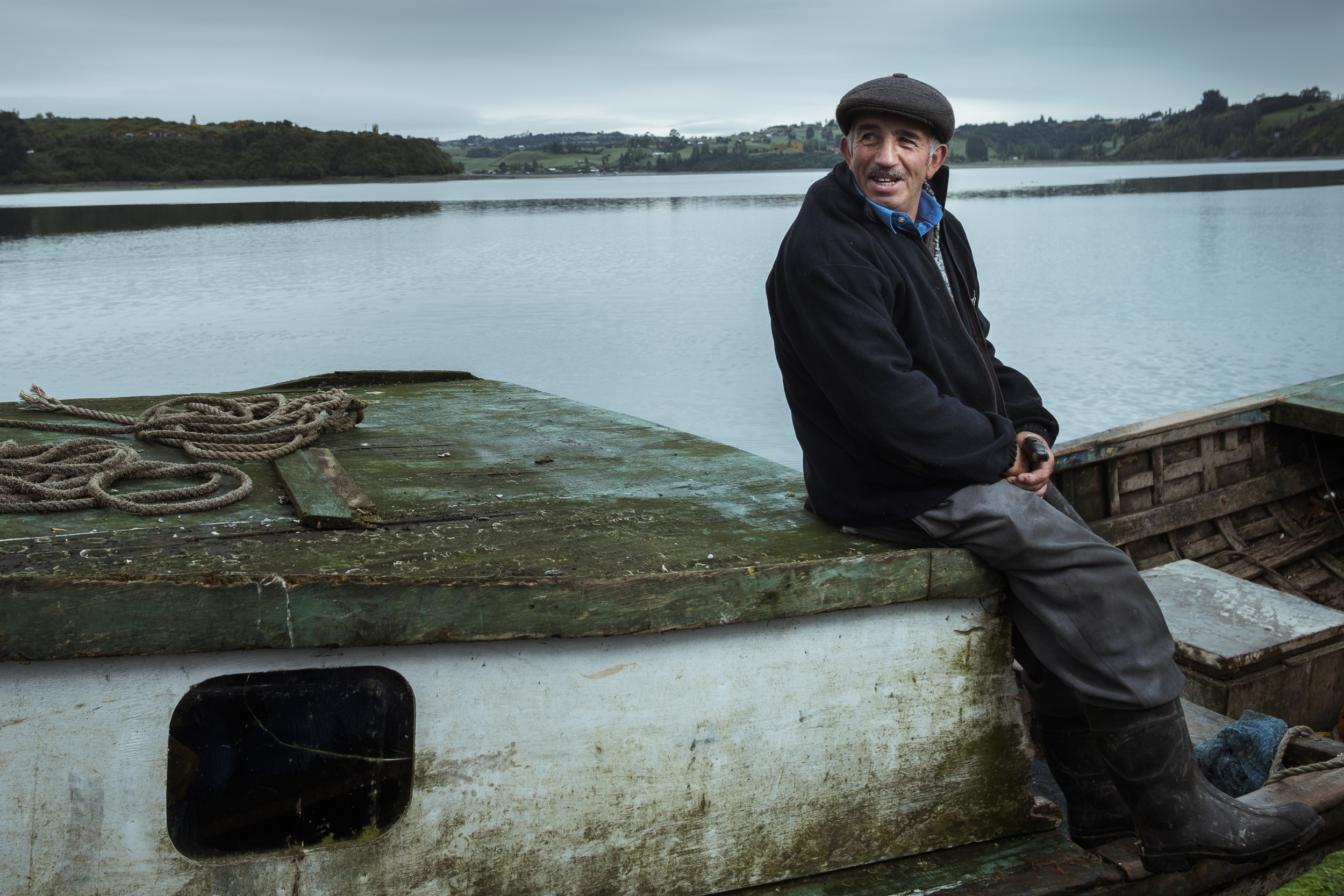I think it was 2010 when I first proposed to a magazine to do a photo essay on the boat builders in Chiloé. Although, it could’ve been 2009. Either way, it was almost a decade ago. Since then I’ve been trying to get this done. Finally, last year, thanks to our local Fujifilm distributors, Fotomar, I got to do it. You can only imagine how excited I was.
I packed up my things having a very clear idea of how I wanted to approach this project. I would take the absolutely gorgeous Fujifilm X-T3 and battery-powered strobes (Profoto B1x). I still wanted to travel light with only one backpack for all my gear, so I took the F2 trilogy. That’s the 23, 35 and 50mm F2 lenses. All of them are small, light, weather-sealed and have totally awesome image quality.
Chiloé is one of those places that takes a long time to get to, even if they’re not that far away as the crow flies. From Santiago you have to take a plane, then a car, get on a ferry and then drive some more. All in all, it takes about 10 hours to get there (on a direct flight it would take about 1 hour and 40 minutes). Since my excitement only grew as the photographing part drew closer, I wasn’t even bothered by this and just enjoyed all the beautiful sights that a trip like this has to offer.
Once I got there, I immediately set out to look for my first subject, Daniel Barría. There’s a very dynastic dynamic to boat building in Chiloé. Most builders have one of three last names: Barría, Bahamonde or Ojeda. If they don’t, they’re either married to or related to someone from those families. It’s not easy to get in contact with them since most, if not all, have no social networks, email or any modern way of communication. They might a phone, which they rarely answer! So, basically it was a matter of going to where they work and asking if I could take their picture. This was a fascinating process. When asked if I could take a picture, most of them said yes and moved away. All of them, with no exception, were really used to people photographing the boats, but not them. So, that was always a good conversation, making them realise that I was interested in them and not what they built.
Daniel was easy to photograph; he was very docile, and had a very quick understanding of what I was doing and what I needed from him. The shoot went fast and flowed perfectly. I even had time to photograph Dagoberto, a delightful man that worked on the wood bending part of the shop. These boats are built with very old techniques, which include using steam and water to bend wood into the shapes needed for the boat’s hull. Dagoberto was kind enough to talk me through all the system he had installed there and show me how it was done. Showing interest in people you want to photograph always has this great by-product of learning about all sorts of things.
Photography was done like this: take a general light measurement with the camera, underexpose by ⅔ of a stop and accentuate my subject with a strobe and a diffused umbrella as a modifier. Both of the following shots were done that way. I was up for a very good start and went back to the hotel in very high spirits.
The next day, I returned to the same town where Daniel and Dagoberto worked to photograph other builders who worked nearby. All the places I had to go were a good two-hour drive from where I was staying. José was next. This was a very different experience. I stayed with him all day, just to get a few portraits. He wasn’t especially interested in being photographed and carried himself that way – a tough, respected and hard-working man. You could actually feel his presence in everything his assistants did. They were always looking for approval of this silent but strong man. His photo is probably the most traditional portrait of them all, in the sense that it lacks context and his face is what fills the frame. I feel he deserved it, he is a very compelling character.
Days went on like that – sometimes great, others not so much. I struggled with a problem I hadn’t really taken into account. I’m a fashion and advertising photographer for the most part. As such, I’m not used to getting back from work without all the photographs that I need or that I set out to do. This is a totally different experience! My subjects wouldn’t always agree to being photographed or wouldn’t cooperate like I’m used to. I usually work with models that are paid to “stay there” and “do as I say”. That took some getting used to! Then, there’s the lack of a creative team, which is a double-edged sword. On one hand, it’s really great to have total creative freedom. On the other hand, if you work with a team you like and trust, you really miss their input. It’s difficult enough to keep everything under control when you’re trying to balance ambient light and strobes without an assistant on a moving boat while it’s raining! It’s basically impossible to watch out for things that may visually work better if done differently. So, every day I was setting my own goals, and trying to keep it as simple and straightforward as I could.
Gear has a lot to do with this; having cameras that work as consistently as my Fujifilm X-T3 does is fundamental. It rained every day, almost every moment. It wasn’t a meek drizzle or a few drops, but ranged from heavy rain to ridiculous downpour, with a few moments of fleeting light. It was the kind of rain that makes it difficult to look at your screen to see how the photo you just shot turned out. Having the confidence that everything would still be working at the end of the day was crucial. I would get to the location and before getting out of my truck, decide on what lens I would use, since changing lenses in the rain is not easy to do. I would then talk to my subjects, set up the lights (using anything from umbrellas to trash bags to protect them from the water) and shoot. That self-imposed way of shooting turned out great because I wouldn’t be second guessing my light setup or lens of choice in an environment that didn’t really lend itself to do that.
Personal projects are tough. They require that you put yourself and your work out there, devoid of any buffer between your soul and your audience. If somebody doesn’t like an ad campaign you shot, you can always blame the ad agency or client. This is different. It’s just you and that takes courage. Being brave is taking the risk and doing something you know could go wrong, assessing the complexities and planning ahead to overcome them. If not, you’re just being reckless and most probably wasting your time and somebody else’s too. Knowing exactly how hard you can push yourself and your gear is key to this. I knew right from the start that my Fujifilm X-T3 was up to it. I knew I was. I just needed subjects and these are the ones I found. Warm, charming, hard-working men that shared a moment with me and gave me these wonderful images.

